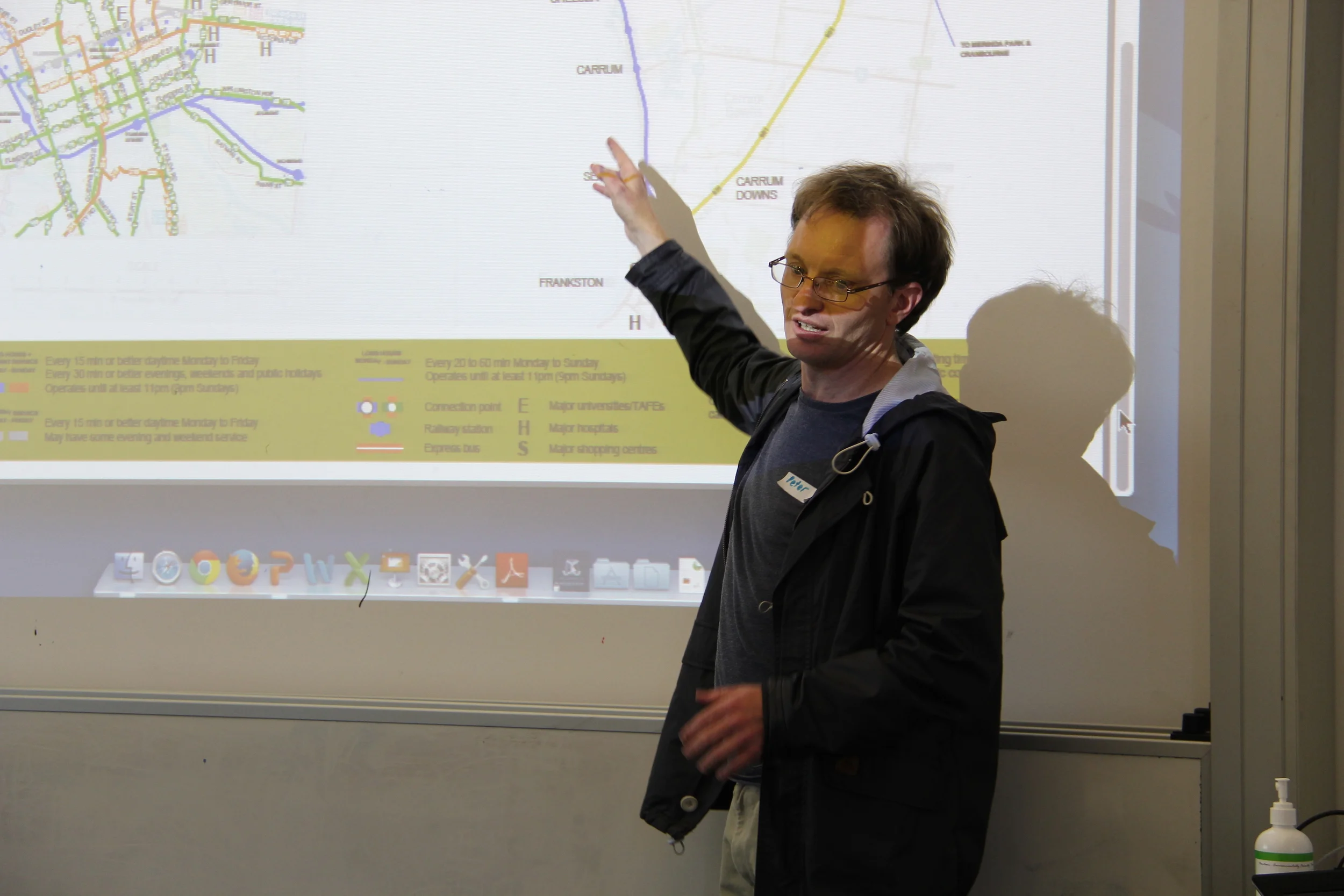Key Session Details:
Has been working on planning bus networks in Wyndham and Brimbank at PTV.
Attributes of service that make them useful and increase patronage:
Melbourne: people think in terms of mode. Trains are 7 days a week till midnight. Trams run frequently, turn up and go. Rail modes have a high level of recognition as a way of getting to the CBD. Mental imagery of the ‘network’ is radial - in and out of CBD.
Buses a different story. Low visibility/awareness/support in the community. Walk and park and ride at train stations, not many people using buses.
Service planning has been done in silos in the past. Unharmonised bus and train timetables a result.
Most Melburinians live beyond 10km from CBD. Here, most services are buses. But buses are lower capacity. Low level of service frequency - 2,3 times a day. Some every 10-15 minutes, some corridors higher.
We need to change the way that people think about the PT network if we are to serve these people with buses. Bus needs to be considered a viable means of getting around.
Trip pattersn are changing - more diverse, more dispersion throughout the day. Buses can address this due to their low cost and flexibility.
Efficient bus network would operate as a grid, on major roads and offer high reliabilty of running times.
Smartbus + train + tram on a map shows a high frequency network, which is more versatile and serves a lot more of the urbanised area. More complex trip patterns can be served.
When you present the network in this way, you can change people’s mental imagery of the network - and hence their behaviour.
Jarrett Walker’s website discusses the frequent network, and the extent to which it can change public transport usage.
A lot of public debate to do with infrastructure, not service. This needs to change, the focus should be on service offerings. Frequent bus services.
Can also inform planning decisions - car parking requirements, for example, can be considered in context of where the development sits on the high frequency network. Virtuous circle - once you get higher density, you get more passengers, and can justify further investment in services.
Frequency is freedom. Ideal is to forget the timetable, day and night. With freedom, your use of network will increase, as will understanding of where it can get you.
People are pragmatists when it comes to PT. We need to appeal to majority that will use the mode that’s best for them.
Possibility of a two tier network: fast, direct routes that are more frequent along main roads, with local routes servicing the roads in between. People want frequency, directness, operating spans, connection with trains.

